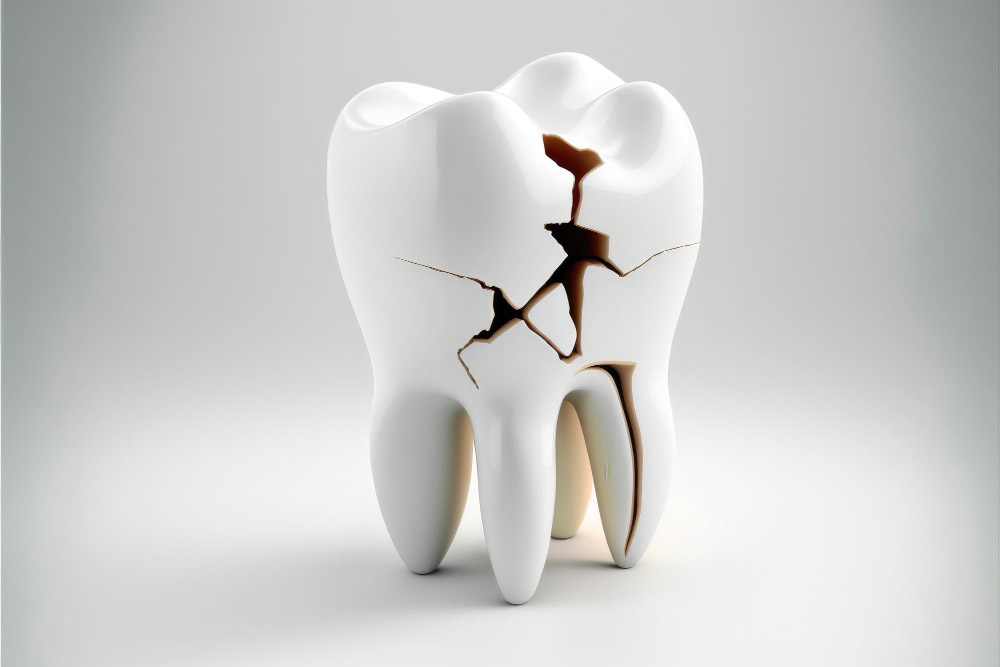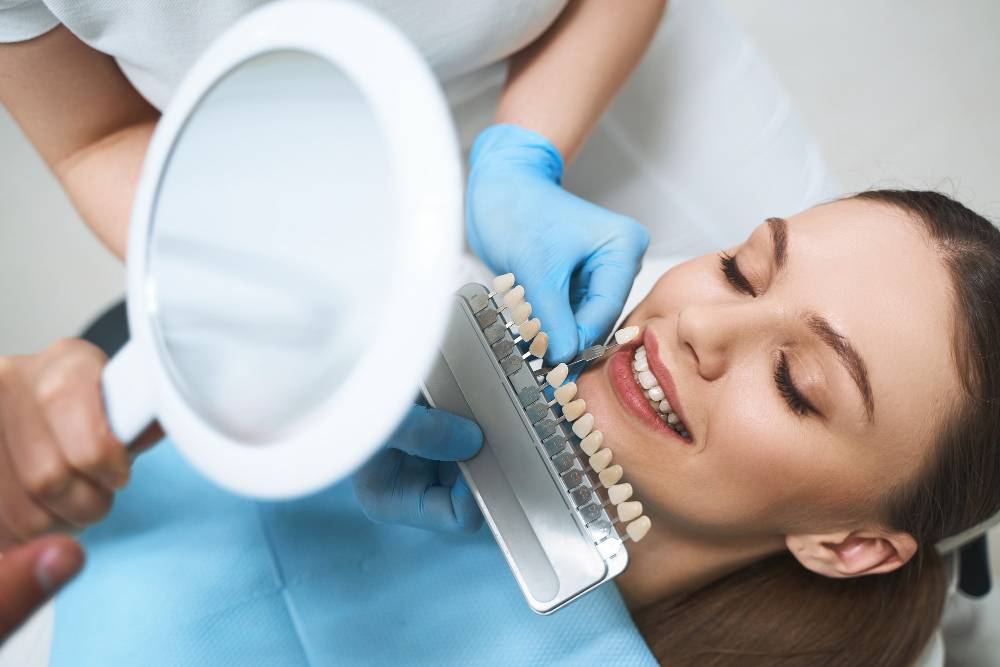Experiencing a broken tooth can be both painful and distressing. Whether it results from an accidental fall, biting down on something hard, or due to underlying dental issues, the immediate steps you take can significantly influence the outcome of your dental emergency. While the prospect of dealing with a broken tooth might seem daunting, it’s crucial to understand that timely and appropriate actions can mitigate pain and prevent further complications until professional care is sought. In Australia, where sports and active lifestyles are common, dental emergencies such as these are not uncommon. However, with the right knowledge, you can navigate this situation effectively, ensuring the best possible care for your dental health.
Understanding the Severity of Your Broken Tooth
Tooth fractures can range from minor chips to severe breaks. The extent of the damage can greatly influence the type of treatment required and the urgency of dental care. A minor chip might not cause pain and can often wait a few days for dental attention, while a severe break involving the tooth’s nerve may require immediate emergency dental care due to the intense pain and risk of infection.
Evaluating the severity of the break is the first step. If the broken tooth is accompanied by sharp pain, especially when exposed to temperature extremes or pressure, it might indicate that the break is near or has exposed the nerve. Visible signs of a severe break include a large portion of the tooth missing, a crack that extends down to the root, bleeding from within the tooth, or loose fragments of the tooth.
Immediate Steps to Take
Immediately after sustaining a tooth break, it’s important to take the following steps to manage the situation:
- Rinse Your Mouth: Use warm water to gently rinse your mouth. This helps to clean the area and can remove any tooth fragments that may be present.
- Apply a Cold Compress: To reduce swelling and alleviate pain, apply a cold compress to the cheek or lips near the broken tooth. Do this for 20-minute intervals.
- Recover Any Broken Pieces: If possible, save any pieces of the tooth that have broken off. Rinse them gently with warm water and keep them in a clean container. Bring these with you when you see the dentist, as they may be useful for the repair process.
- Control Bleeding: If there is bleeding, use a piece of sterile gauze or a clean cloth to apply gentle pressure to the area. If bleeding does not stop after 10 minutes of constant pressure, seek immediate medical attention.
Taking these initial steps can help manage your immediate symptoms and prepare you for your visit to the emergency dentist.
Managing Pain and Discomfort
While waiting for your dental appointment, managing pain is a priority. Over-the-counter pain relief medications, such as paracetamol or ibuprofen, can be effective. It’s important to follow the recommended dosage and consider any personal contraindications you might have.
Avoiding further irritation of the broken tooth can also help manage pain. Try to chew on the opposite side of your mouth and steer clear of foods that are particularly hot, cold, hard, or chewy. Soft foods or a liquid diet may be more comfortable until you can receive professional treatment.
Temporary Measures to Protect the Tooth
In some cases, the broken tooth may have sharp edges that can irritate or damage the tongue, cheeks, or gums. Covering these edges temporarily can prevent further injury to your mouth. Dental wax, available at pharmacies, can be moulded over the sharp edges to protect soft tissues in your mouth. Alternatively, a piece of sugar-free gum can serve as a temporary cushion until you’re able to see the dentist.
It’s important to note that these are temporary measures and should not replace professional dental care. They are meant to provide comfort and protection in the short term while you arrange for an emergency dental visit.
What to Avoid
Certain actions can exacerbate the situation and should be avoided to prevent further damage to the broken tooth or surrounding teeth. Here are some key things to avoid:
- Do Not Chew on the Affected Side: Putting pressure on the broken tooth can increase pain and potentially cause more damage.
- Avoid Extreme Temperatures: Eating or drinking items that are very hot or very cold can trigger pain, especially if the tooth’s nerve is exposed.
- Steer Clear of Hard and Sticky Foods: These can pull on the broken tooth or lodge in the crack, leading to increased discomfort or infection risk.
- Do Not Use the Tooth to Bite Down on Anything Hard: This includes non-food items like pens or fingernails, as they can cause further damage.
By understanding the severity of your broken tooth and taking appropriate immediate steps, you can effectively manage the situation until you’re able to receive professional dental care. Managing pain, protecting the tooth from further damage, and knowing what to avoid are essential components of pre-emergency care. Remember, while these measures are crucial, they are not substitutes for professional dental treatment.
When to Seek Immediate Emergency Dental Care
Identifying when to seek immediate dental attention is critical to preventing further damage or infection. In Australia, dental emergencies are taken seriously, and access to emergency dental services is a priority. Here are signs that you need urgent care:
- Severe Pain: If the pain is unbearable and cannot be managed with over-the-counter painkillers, it’s a clear indication that urgent dental care is needed.
- Significant Bleeding: While some bleeding is expected with a broken tooth, if it’s excessive or doesn’t stop with pressure, immediate professional attention is necessary.
- Signs of Infection: Swelling, bad taste, fever, or pus around the affected area can indicate an infection, which requires prompt treatment to prevent spreading.
Delaying treatment for these symptoms can lead to more serious health issues, including widespread infection or tooth loss.
Preparing for Your Emergency Dental Visit
Being prepared for your emergency dental visit can help expedite treatment and alleviate anxiety. Here’s how to prepare for your visit:
- Gather Important Information: Have your dental and medical history ready, including any allergies or medications you’re taking. This information is crucial for safe and effective treatment.
- Describe Your Symptoms Clearly: Be ready to explain the circumstances of your injury, the severity of your pain, and any steps you’ve already taken to manage the situation.
- Find an Emergency Dentist: If you do not already have a dentist who provides emergency services, it’s important to find one quickly. In Australia, many dental clinics offer emergency appointments, but availability can vary.
Emergency dental services are designed to address urgent dental issues promptly. Australian Dental Association (ADA) provides resources to help locate emergency dental services in your area, ensuring you receive the care you need when you need it.
Prevention Tips for the Future
Preventing future dental emergencies starts with good oral hygiene and protective measures. Here are some tips to help reduce the risk of breaking a tooth:
- Wear a Mouthguard: If you participate in sports or activities that pose a risk to your teeth, wearing a mouthguard can provide significant protection against injuries.
- Maintain Good Oral Hygiene: Regular brushing, flossing, and dental check-ups can prevent decay and weaken teeth, which are more susceptible to breaking.
- Avoid Hard Foods: Biting down on hard foods, like candy or ice, can cause teeth to crack or break. Being mindful of what you eat can prevent unnecessary damage.
- Use Tools, Not Teeth: Avoid using your teeth as tools to open bottles or packages. This can put undue stress on your teeth and lead to fractures.
By adopting these preventive measures, you can significantly reduce your risk of experiencing a dental emergency in the future.
The Importance of Timely Action and Professional Care
Dealing with a broken tooth can be a stressful experience, but understanding how to manage the situation effectively can make a significant difference in the outcome. Taking immediate steps to manage pain and protect the tooth, knowing what to avoid, and recognising when to seek emergency care are all crucial. Preparing for your emergency dental visit and understanding preventive measures can also help you navigate this situation more confidently.
Remember, timely action and professional care are paramount. Delaying treatment can lead to further complications, including infection or even tooth loss. In Australia, the availability of emergency dental services ensures that you can receive the care you need when you need it most.
For residents of Fairfield, Victoria, and surrounding areas, Care For Smiles offers comprehensive emergency dental services. With a focus on gentle care and a commitment to addressing dental emergencies promptly, they can provide the expert assistance you need during a dental emergency.
By taking the right steps before seeing an emergency dentist and utilising preventive measures, you can protect your dental health and reduce the likelihood of future emergencies. Remember, a proactive approach to dental care is the best way to ensure a healthy, happy smile.
FAQ
1: What Should I Do Immediately After Breaking a Tooth?
Immediately after breaking a tooth, rinse your mouth with warm water to clean the area. Apply a cold compress to the outside of your cheek to reduce swelling and alleviate pain. If there are any pieces of the broken tooth, save them in a clean container, as they might be useful for your dentist. Control any bleeding with a piece of sterile gauze or a clean cloth by applying gentle pressure.
2: Can I Take Painkillers for a Broken Tooth?
Yes, over-the-counter painkillers such as paracetamol or ibuprofen can help manage the pain from a broken tooth. Ensure you follow the recommended dosage and consider any personal contraindications. It’s important to remember these are temporary solutions, and seeking professional dental care is crucial.
3: How Do I Know If My Broken Tooth Is an Emergency?
Your broken tooth is an emergency if you experience severe pain that can’t be managed with over-the-counter medication, significant bleeding that doesn’t stop with pressure, or signs of infection like swelling, fever, or a bad taste in your mouth. These symptoms indicate the need for immediate professional dental care.
4: What Are Temporary Measures to Protect a Broken Tooth?
To temporarily protect a broken tooth and prevent further injury to your mouth, you can use dental wax or sugar-free gum to cover any sharp edges. These are short-term solutions to provide comfort until you can see a dentist. However, they do not replace the need for professional dental treatment.
5: How Can I Prevent Future Dental Emergencies?
To reduce the risk of future dental emergencies, wear a mouthguard during sports, maintain good oral hygiene with regular brushing and flossing, avoid using your teeth to open things, and steer clear of hard foods that can crack or break your teeth. Regular dental check-ups can also help identify and treat potential problems before they become emergencies.
6: Where Can I Find an Emergency Dentist in Australia?
If you need an emergency dentist in Australia, you can start by checking the Australian Dental Association’s website for a list of dental clinics offering emergency services. Additionally, many dental practices, such as Care For Smiles in Fairfield, Victoria, provide emergency dental care and can be contacted directly to arrange an urgent appointment.


